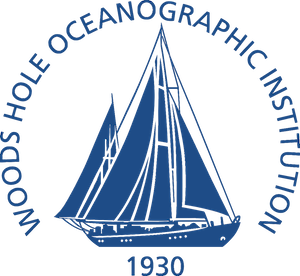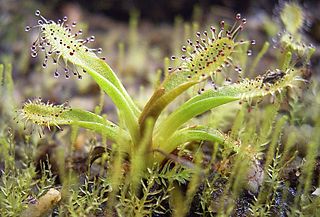
Oceanography, also known as oceanology, sea science, ocean science, and marine science, is the scientific study of the ocean. It is an Earth science, which covers a wide range of topics, including ecosystem dynamics; ocean currents, waves, and geophysical fluid dynamics; plate tectonics and seabed geology; and fluxes of various chemical substances and physical properties within the ocean and across its boundaries. These diverse topics reflect multiple disciplines that oceanographers utilize to glean further knowledge of the world ocean, including astronomy, biology, chemistry, geography, geology, hydrology, meteorology and physics. Paleoceanography studies the history of the oceans in the geologic past. An oceanographer is a person who studies many matters concerned with oceans, including marine geology, physics, chemistry, and biology.

Harald Ulrik Sverdrup was a Norwegian oceanographer and meteorologist. He served as director of the Scripps Institution of Oceanography and the Norwegian Polar Institute.

The Woods Hole Oceanographic Institution is a private, nonprofit research and higher education facility dedicated to the study of marine science and engineering.
The Alexander Agassiz Medal is awarded every three years by the U.S. National Academy of Sciences for an original contribution in the science of oceanography. It was established in 1911 by Sir John Murray in honor of his friend, the scientist Alexander Agassiz.
Henry Bryant Bigelow was an American oceanographer and marine biologist.

Drosera arcturi is a perennial, insectivorous species of sub-alpine or alpine herb native to Australia and New Zealand. It is one of New Zealand's two alpine species of sundew, the other being Drosera stenopetala. The specific epithet, which translates as "of Arthur" from Latin, is a reference to Mount Arthur, in north-eastern Tasmania, the type locality of the species.

The first USS Patuxent was a fleet tug in commission in the United States Navy from 1909 to 1924. She served the United States Atlantic Fleet and saw service in World War I. After the end of her Navy career, she was in commission in the United States Bureau of Fisheries from 1926 to 1932 as the fisheries research ship USFS Albatross II.

Alatinidae is a family of box jellyfish within class Cubozoa, containing the following genera and species:
Bigelow Laboratory for Ocean Sciences, founded in 1974, is an independent, non-profit oceanography research institute. The Laboratory's research ranges from microbial oceanography to the large-scale biogeochemical processes that drive ocean ecosystems and health of the entire planet.
John Tee-Van was an American ichthyologist and zoologist. He began his career as an apprentice zookeeper at the New York Zoological Park and ended it as its General Director.
Columbus O'Donnell Iselin (1904–1971) was an American oceanographer. He was the director of the Woods Hole Oceanographic Institution from 1940 to 1950, and from 1956 to 1960. He was Professor of Physical Oceanography at Harvard University and the Massachusetts Institute of Technology (MIT).

Marie "Bobbie" Dennis Poland Fish was an American oceanographer and marine biologist known for her bioacoustics research and the finding of eel eggs in the Sargasso Sea. Her research on underwater sound detection allowed the United States Navy to distinguish enemy submarines from wildlife. The United States Navy awarded her its highest civilian award, the Distinguished Service Medal, in 1966 to recognize her contributions during her twenty-two years (1948–1970) leading the "Underwater Sound of Biological Origin" project for the Office of Naval Research. She also founded the Narragansett Marine Laboratory with her husband Charles. It is now the University of Rhode Island's Graduate School of Oceanography.

Atorella is a genus of crown jellyfish. It is the only genus in the monotypic family Atorellidae and includes five species. Members of this family are known from the eastern coast of Africa and the western coast of Panama.
The Dana expeditions were four Danish research expeditions from 1920 to 1930. The first two were undertaken by the Dana I and the third by the Dana II. They were funded in part by the Carlsberg Foundation and led by Johannes Schmidt. The first three expeditions took place from 1920 to 1922 and the fourth and final was from 1928 to 1930. They centered around investigating the breeding of eels. The first two expeditions allowed Schmidt to prove his theory that European eels migrate to the Sargasso Sea to spawn. The final expedition traveled to the Indian Ocean and gathered numerous samples.

Maria Johanna Dahl, née Grosset was a Ukrainian-born German zoologist, arachnologist, and carcinologist. Along with her husband, Friedrich Dahl, she was a co-author and editor of the zoological series Die Tierwelt Deutschlands, published between 1925 and 1968.
Lillian Segal Root, best known as Lillian Segal, was an explorer known for her participation in William Beebe's 1925 Arcturus expedition where she examined how light was produced by deep sea fish.

Isabel Cooper Mahaffie was an American artist known for her work depicting animals. She was a staff artist for the New York Zoological Association who participated in multiple research expeditions.
Atorella octogonos is a species of crown jellyfish in the family Atorellidae. It has been found in the Bahamas.

Atorella vanhoeffeni, also known as the gold-spotted crown jelly, is a species of true jellyfish in the family Atorellidae.
Praya reticulata is a species of siphonophore in the family Prayidae. It has a distinctive net of radial canals that make up its central cavity, a distinctive somatocyst that sharply doubles back, and asymmetrical canals on its bracts. The species was described by Henry Bryant Bigelow following its discovery during an expedition of the USS Albatross. The specific epithet reticulata is Latin, and comes from the word reticulatus which means "net-like". In Chinese the species is called 網管帕腊水母, which can be Romanized as wǎngguǎn pà là shuǐmǔ.









